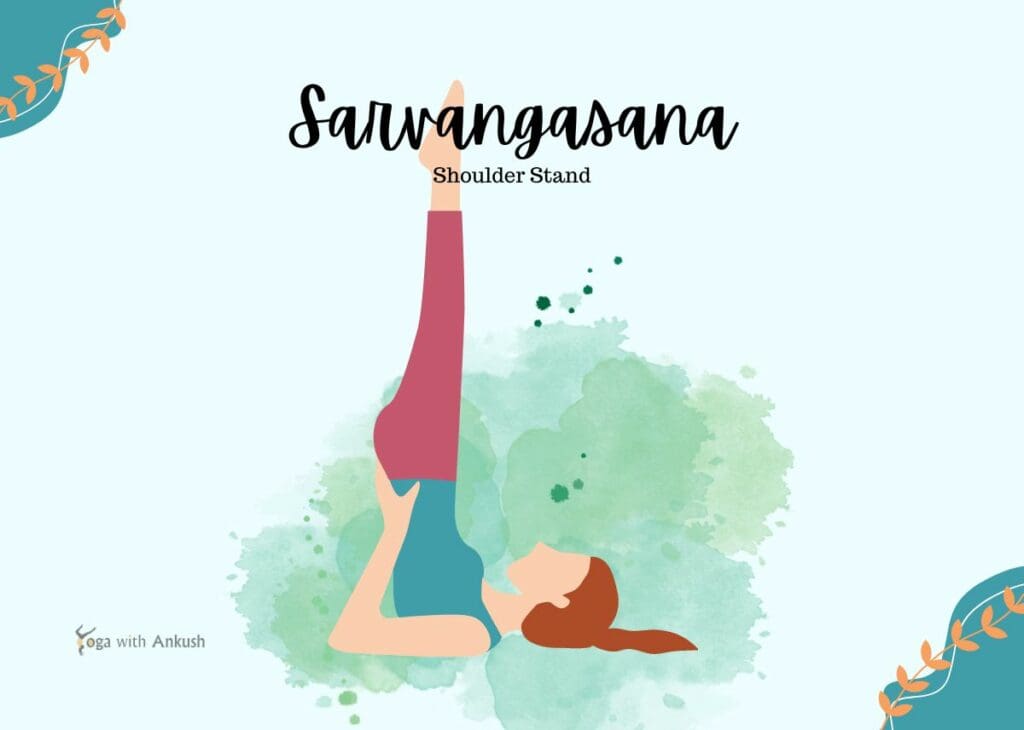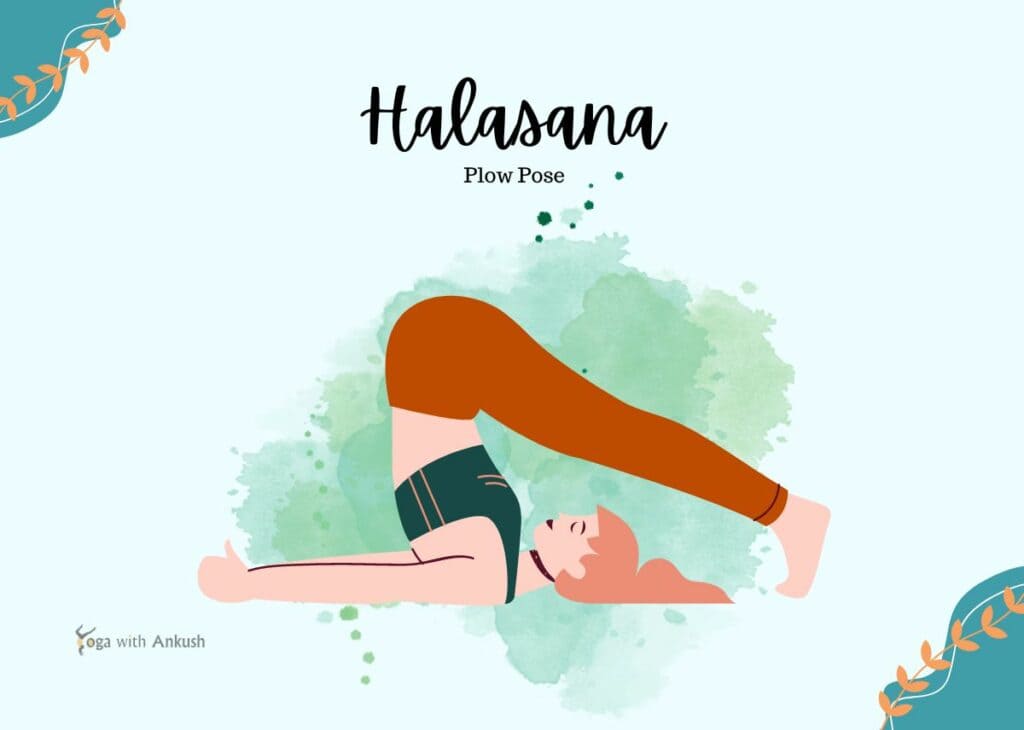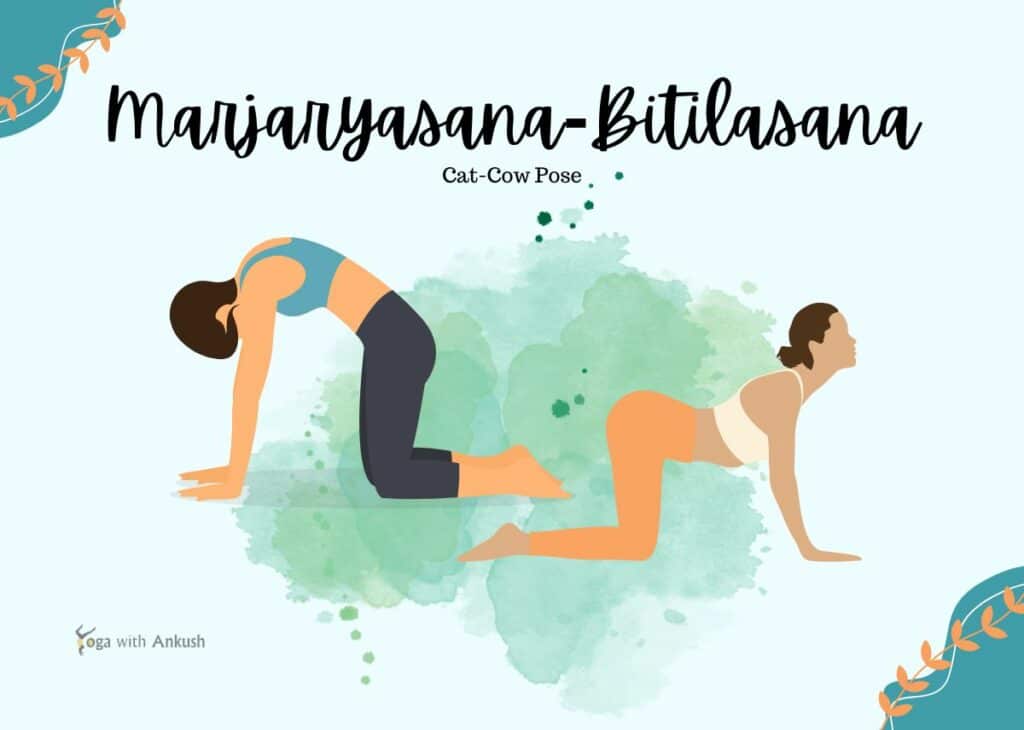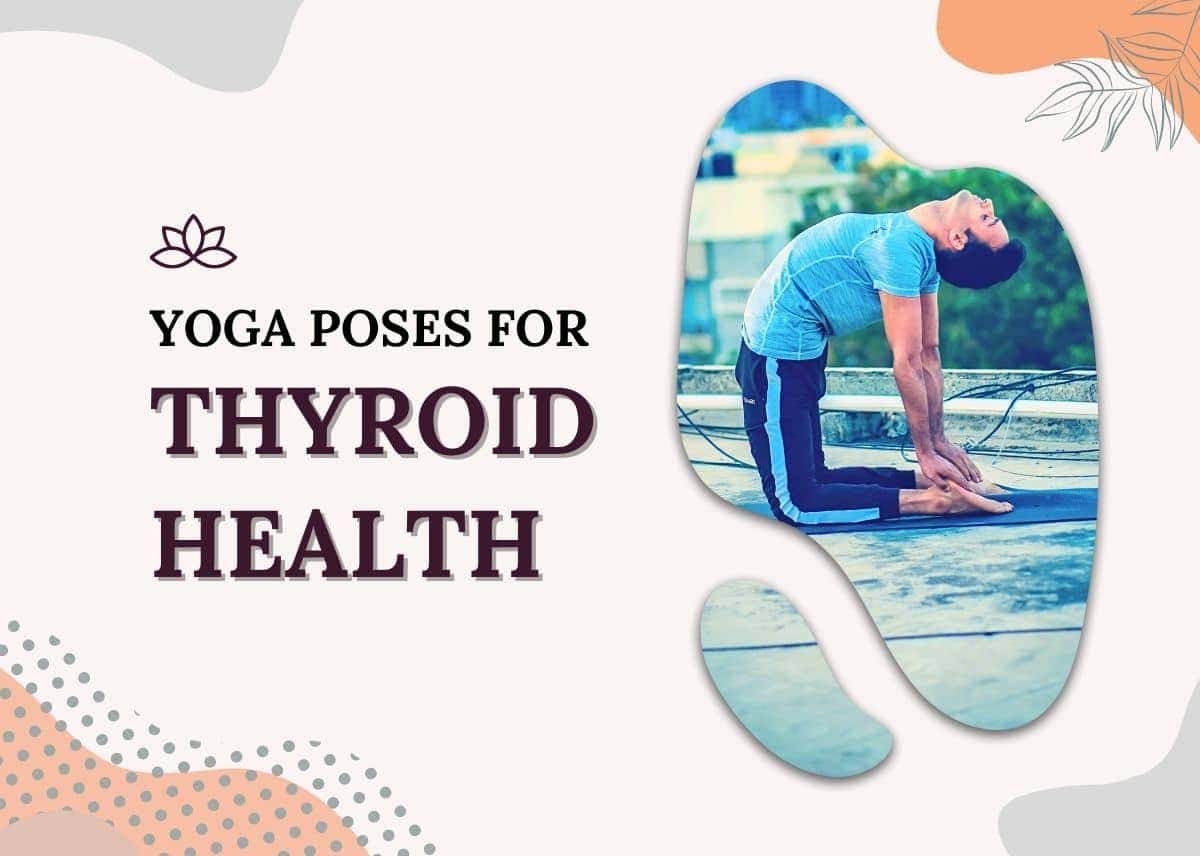Yoga Poses for Thyroid Health! What Yoga Poses are good for Thyroid Health? The thyroid gland has a vital function in the regulation of our metabolism, energy levels, and overall state of health. When the thyroid is imbalanced, it can lead to various health issues.
Fortunately, incorporating yoga into your daily routine can help support thyroid health and promote harmony within your body. In this article, we will explore a selection of yoga poses that are particularly beneficial for thyroid health.
Table of Contents
Understanding the Importance of Thyroid Health
The thyroid gland, located in the neck, produces hormones that regulate our metabolism, body temperature, heart rate, and energy levels.
When the thyroid is functioning optimally, we experience a sense of well-being and vitality.
However, factors such as stress, hormonal imbalances, and poor lifestyle choices can disrupt thyroid function, leading to conditions like hypothyroidism or hyperthyroidism.
The Role of Yoga in Supporting Thyroid Function
Yoga is a holistic practice that promotes physical, mental, and spiritual well-being. By incorporating specific yoga poses into your routine, you can stimulate the thyroid gland, improve circulation, reduce stress, and promote overall balance within your body.
Yoga Poses for Thyroid Health
1. Shoulder Stand (Sarvangasana)

One of the most effective yoga poses for thyroid health is the Shoulder Stand. This inversion pose increases blood flow to the thyroid gland, stimulating its function and improving metabolism.
To practice this pose, lie on your back, lift your legs overhead, and support your lower back with your hands. Maintain the position for several breaths, progressively extending the duration as you find greater ease and comfort.
2. Fish Pose (Matsyasana)

The Fish Pose stretches the neck and throat area, stimulating the thyroid and parathyroid glands. It also opens up the chest, enhancing oxygen intake and energy flow.
To perform this pose, lie on your back, lift your chest while resting your crown on the ground, and arch your back. Breathe deeply and hold the pose for 8-10 breaths.
3. Plow Pose (Halasana)

The Plow Pose increases blood circulation to the thyroid gland, helping to improve its function. It also stretches the spine, shoulders, and back, relieving tension and promoting relaxation.
To practice this pose, lie on your back and slowly raise your legs overhead, allowing your toes to touch the ground behind you. Support your lower back with your hands and maintain the pose for a comfortable duration.
4. Camel Pose (Ustrasana)

The Camel Pose stretches the front of the neck, stimulating the thyroid gland and improving its function. It also opens up the chest, shoulders, and abdomen, promoting better circulation and energy flow.
To perform this pose, kneel on the ground, arch your back, and reach back to grasp your heels with your hands. Keep your neck extended and breathe deeply as you hold the pose.
5. Bridge Pose (Setu Bandhasana)

The Bridge Pose stimulates the thyroid and improves circulation to the neck area. It also stretches the spine, chest, and hip flexors, promoting flexibility and reducing stress.
Lie on your back, bend your knees, and place your feet flat on the ground. Lift your hips off the mat, interlace your fingers beneath your back, and press your shoulders and upper arms into the ground. Hold the pose while breathing deeply.
Yoga Poses for Relaxation and Stress Reduction
1. Legs-Up-The-Wall Pose (Viparita Karani)

The Legs-Up-The-Wall Pose is a gentle inversion that promotes relaxation and relieves stress. It improves blood circulation to the thyroid gland, helping to balance its function.
To practice this pose, lie on your back with your legs resting vertically against a wall. Relax your arms by your sides and close your eyes. Stay in this position for several minutes, focusing on deep, rhythmic breathing.
2. Child’s Pose (Balasana)

Child’s Pose is a restorative pose that calms the mind, reduces stress, and stimulates the thyroid gland. It gently stretches the lower back, hips, and thighs, promoting relaxation and flexibility.
Kneel on the ground, sit back on your heels, and fold forward, resting your forehead on the mat. Extend your arms forward or rest them alongside your body. Breathe deeply and hold the pose for a few breaths.
3. Cat-Cow Pose (Marjaryasana-Bitilasana)

The Cat-Cow Pose is a gentle flow between two poses that stretches and massages the spine, neck, and abdomen. It helps stimulate the thyroid gland and promotes flexibility in the neck area.
Begin on all fours, with your hands beneath your shoulders and your knees beneath your hips. Inhale as you arch your back and lift your head (Cow Pose), then exhale as you round your spine and tuck your chin (Cat Pose).
Repeat this flow for several rounds, coordinating your movements with your breath.
4. Corpse Pose (Savasana)

Corpse Pose is a final relaxation pose that allows your body and mind to integrate the benefits of the practice. It promotes deep relaxation, reduces stress, and supports overall thyroid health.
Lie flat on your back, arms relaxed by your sides, palms facing up. Close your eyes and allow your body to surrender to gravity.
Focus on your breath and release any tension or thoughts. Remain in this pose for a few minutes or longer.
The Benefits of Pranayama for Thyroid Health
In addition to yoga poses, practicing pranayama, or breath control techniques, can greatly benefit thyroid health.
Deep breathing exercises, such as Alternate Nostril Breathing (Nadi Shodhana), can help balance the endocrine system and calm the nervous system.
Incorporating pranayama into your yoga practice can further enhance the positive effects on thyroid function.
Practicing Mindfulness and Meditation
Apart from physical poses and breathing techniques, mindfulness and meditation play a vital role in supporting thyroid health.
Stress and anxiety can impact thyroid function, so incorporating mindfulness practices can help reduce these factors.
Taking a few moments each day to sit in stillness, focus on your breath, and cultivate a calm and peaceful state of mind can positively influence thyroid health.
Adopting a Balanced Diet for Thyroid Health
In conjunction with yoga practices, maintaining a balanced diet is essential for supporting thyroid health. Include foods rich in iodine, selenium, and zinc, such as seaweed, seafood, nuts, and whole grains.
Avoid processed foods, refined sugars, and excessive caffeine, as they can disrupt thyroid function. Consult with a healthcare professional or a registered dietitian to create a diet plan tailored to your specific needs.
Conclusion
Incorporating yoga into your daily routine can have a profound impact on thyroid health. The yoga poses discussed in this article stimulate the thyroid gland, promote relaxation, and enhance overall well-being.
By combining physical movement, breath control, mindfulness, and a balanced diet, you can rejuvenate your body and mind while supporting optimal thyroid function.
FAQs (Frequently Asked Questions)
How often should I practice yoga for thyroid health?
Aim for at least three to four sessions per week to experience noticeable benefits. However, even practicing a few poses daily can be beneficial.
Can yoga cure thyroid disorders?
While yoga cannot cure thyroid disorders, it can support overall thyroid health, alleviate symptoms, and improve well-being when combined with medical treatment.
Are there any yoga poses to avoid if I have a thyroid condition?
Certain poses, such as shoulder stand and plow pose, should be avoided if you have a thyroid condition. Consult with a qualified yoga instructor to adapt your practice accordingly.
Can yoga help with weight management in thyroid disorders?
Regular yoga practice can help improve metabolism and promote weight management. Combined with a balanced diet, it can contribute to maintaining a healthy weight.
How long does it take to notice improvements in thyroid health with yoga?
The timeline for experiencing improvements can vary. Consistent practice, patience, and a holistic approach are key. Consult with your healthcare provider for personalized guidance.
Also Read:







